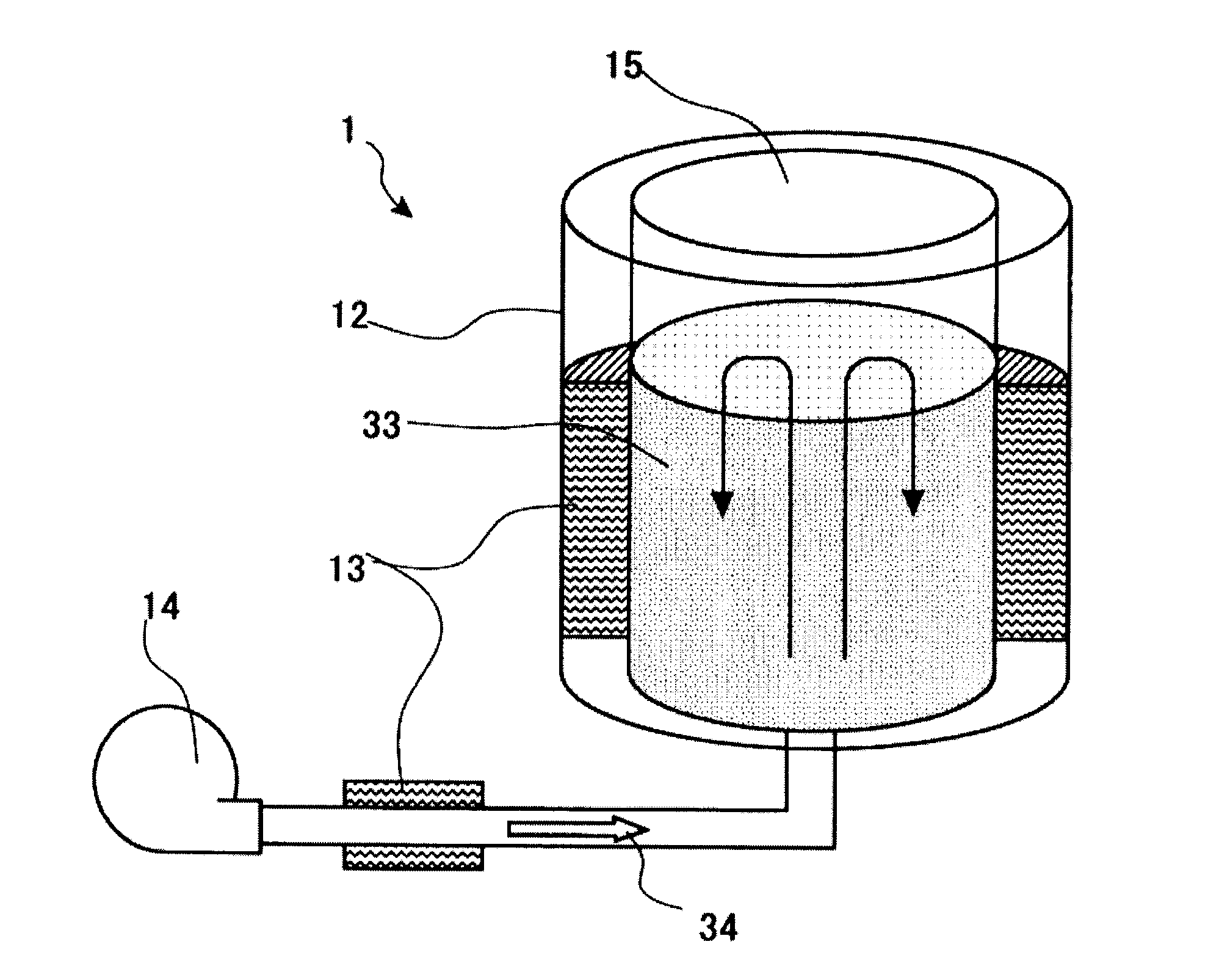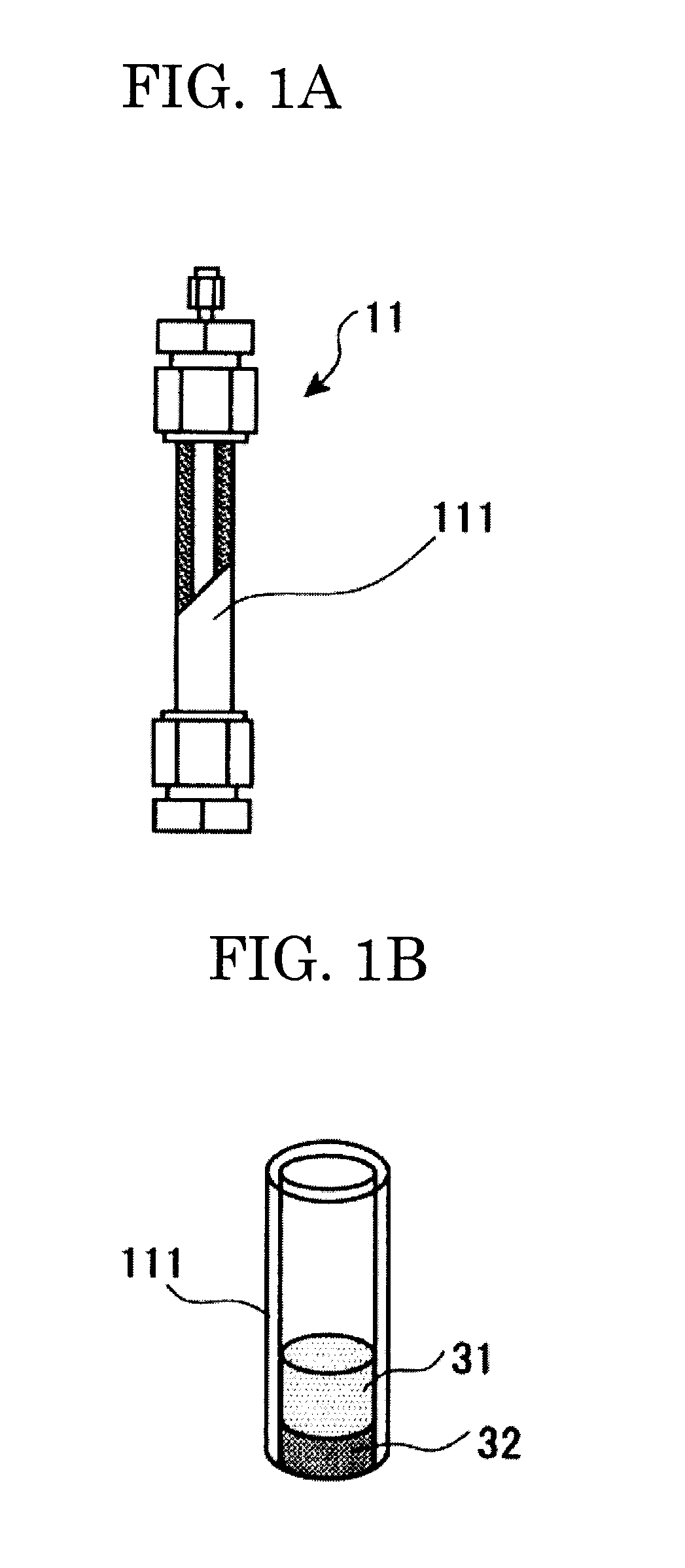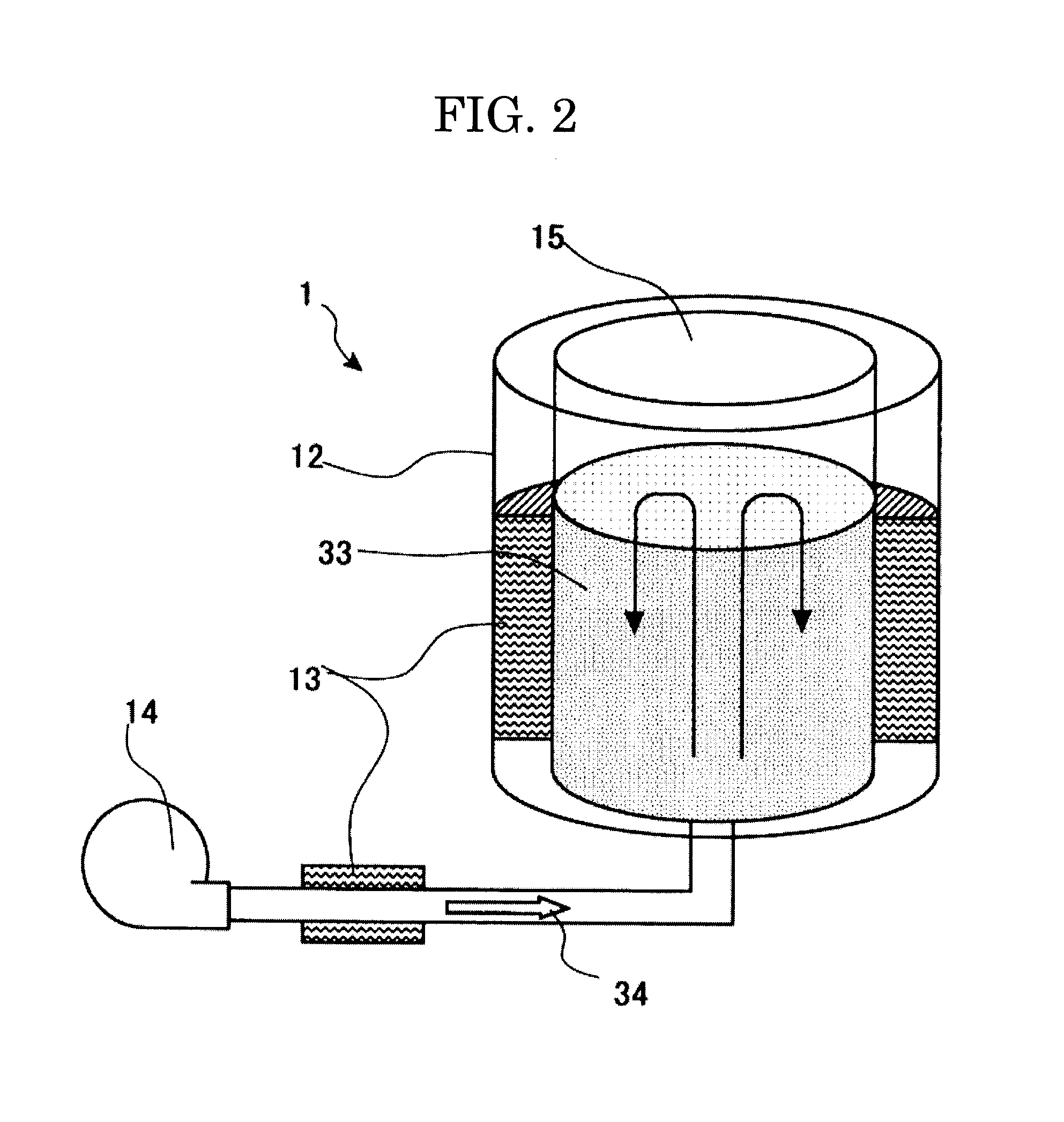Method for treating electrophotographic carrier, method for producing electrophotographic carrier, core material and carrier
a technology of electrophotography and carrier, which is applied in the direction of cleaning process, instruments, cleaning processes and apparatus, etc., can solve the problems of difficult separation of coating layer and core material, change in surface conditions, and change in chargeability of conventional developers, etc., to achieve more efficient decomposition, reduce over time decomposed and/or dissolved matter, and high thermal efficiency
- Summary
- Abstract
- Description
- Claims
- Application Information
AI Technical Summary
Benefits of technology
Problems solved by technology
Method used
Image
Examples
examples
[0138]The present invention will next be described by way of examples, which should not be construed as limiting the present invention thereto.
example a1
[0139]The production example of a carrier treated by the method of the present invention is given below.
(Production of Carrier)
[0140]A coating layer-forming liquid having the following composition was prepared.
Silicone resin (SR2400; product of Toray-Dow Corning Co.): 50 parts by mass
Alumina (aluminum oxide; product of Sumitomo Chemical Co., Ltd): 3 parts by mass
[0141]The thus-prepared coating layer-forming liquid was applied onto the surface of spherical ferrites (core materials) (1,000 parts by mass) having an average particle diameter of 50 μm with a fluidized-bed coater, to thereby form coating layers. In this manner, carrier particles A were obtained.
[0142]The carrier particles A (97 parts by mass) were mixed with commercially available toner particles (product of Ricoh Company, Ltd., Imagio Toner Type 7) (7 parts by mass) to thereby obtain developer A.
[0143]The thus-obtained developer A was subjected to 500,000 copying operations using a copier Imagio...
example a2
[0158]The procedure of Example A1 was repeated, except that the interior of the pressure-resistant reaction container was adjusted to 400° C. in temperature and to 30 MPa in pressure, to thereby obtain Evaluation Sample A2.
[0159]Through observation of Evaluation Sample A2 under a scanning electron microscope, almost all the silicone resin was found to be removed. In Evaluation Sample A2, the rate of the silicone resin removed was found to be 80%, and a change in magnetic characteristics was found to be 3.6% relative to core materials before use.
PUM
 Login to View More
Login to View More Abstract
Description
Claims
Application Information
 Login to View More
Login to View More - R&D
- Intellectual Property
- Life Sciences
- Materials
- Tech Scout
- Unparalleled Data Quality
- Higher Quality Content
- 60% Fewer Hallucinations
Browse by: Latest US Patents, China's latest patents, Technical Efficacy Thesaurus, Application Domain, Technology Topic, Popular Technical Reports.
© 2025 PatSnap. All rights reserved.Legal|Privacy policy|Modern Slavery Act Transparency Statement|Sitemap|About US| Contact US: help@patsnap.com



